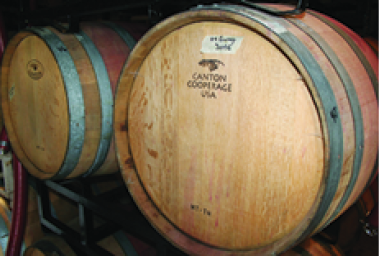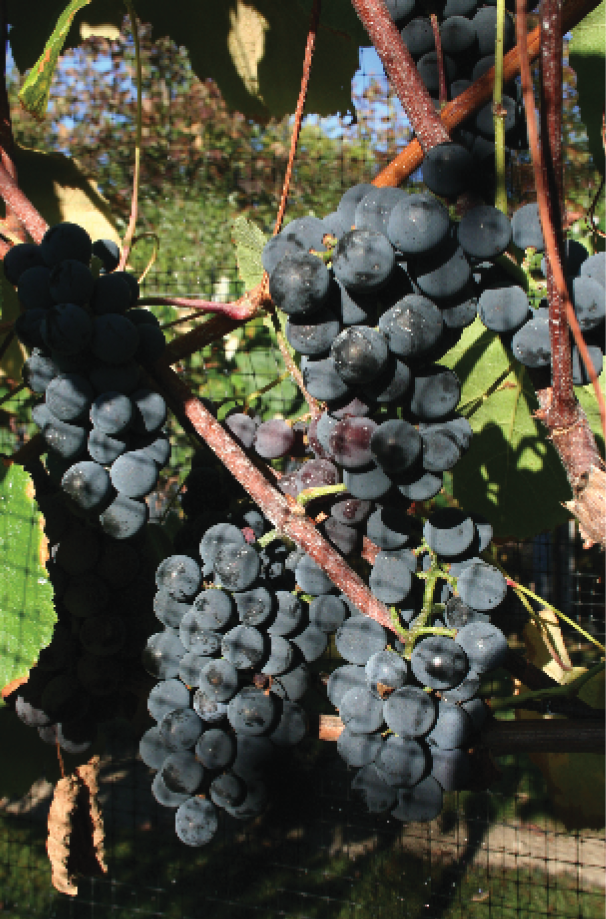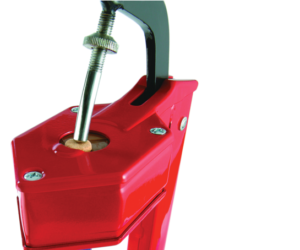
There is more to cellaring bulk wine than meets the eye. Home winemakers heave a sigh of relief when the last of the harvest processing is done, but the job is not over. The wine is put away in carboys, demijohns, tanks, or barrels and we hope it stays safe through the winter and spring. But as eminent wine scientist Yair Margalit says in Concepts in Wine Chemistry, “As a food product, wine is very susceptible to various chemical and microbial spoilages.” He makes the reassuring note that the spoilage will not make the wine unsafe to drink, only unpleasant. Since the unpleasantness can extend to the point of being undrinkable, it is something we all need to keep an eye on all the time.
As Margalit points out, wine spoilages generally represent chemical or microbial faults. They can be classified in a variety of ways. One classification concerns their point of origin in the wine production process and we are limiting ourselves today to those that come about after the wine is fermented and before it is bottled: Bulk aging. As with so many problems in life, prevention is much cheaper and easier than correction. While one might think that active intervention at all times would be the safest course, it really may not be. While neglect leads to a lot of wine problems, it is also possible to overdo your intervention and cause a fault where there was none to begin with. Throughout the aging process the winemaker is on a tightrope walk between intervening to prevent and correct problems while remaining relaxed enough to let good wine evolve naturally.
The shorter list of problems comes from doing too much — I will start with that. In the cellar, the likely sources of “overdoing” are over-oaking, over-fining, and over-sulfiting. If you use a brand new barrel, one rule of thumb is to age your wine in it no more than one week per gallon (4 L) of capacity. That makes it easy with a 60-gallon (227-L) or 30-gallon (114-L) barrel as you are looking at months of aging. However, if you wish to use a 3-, 5-, or 10-gallon (11-, 19-, or 38-L) barrel, you will need to monitor it very closely. Sample, smell, and taste the wine in a small barrel at least once a week for oakiness. It is also a good idea to have someone else taste the wine from time to time as you may grow increasingly used to the developing oakiness and miss the point where it becomes too much. If you have already introduced too much oak — whether from a barrel, sticks, chips, or oak extract — it is difficult to recover the wine. You can remove excess tannins with a protein-fining agent such as egg whites or gelatin (or blending in additional un-oaked wine). Remove the wine from the oak (or remove the oak product from the wine) and continue cellaring it in glass or stainless steel. If it is not horribly over-oaked at bottling time, go ahead and bottle it, but expect to wait a year or two for it to mellow out. The oaky odor, however, has no treatment.
Over-fining can take several different forms, but is generally faulted as “stripping” a wine of desirable aromas, flavors, color, or mouthfeel. The best prevention for over-fining is to always carry out a bench trial with your chosen fining agent on a sample of the wine before applying the bulk treatment. Whether you are fining to improve clarity or to correct a problem — like excessive tannins from over-oaking — start your trial with the lowest recommended dose. When you find a level that works, apply no more than the necessary concentration to the bulk wine. It is better to face a second round of fining later than to overdo it the first time, since a stripped wine seldom recovers.
To avoid over-sulfiting, test your cellared wine for free sulfur dioxide (FSO2) once a month or so throughout the aging period. If you somehow lose control of your sulfiting and wind up with too much in the wine, there are three approaches for correction. The first, and most highly recommended method, is to simply wait without adding any further sulfites until the level has dropped below your target number. If you have accidentally reached a level that is much too high, a splash racking with vigorous aeration will drive off some portion of the excess. Proceed with caution, as excessively splash-racking an aging wine can also contribute to undesirable oxidation (as discussed below). The third method also carries a risk of unintended oxidation. That method is to carefully discharge the excess sulfite with hydrogen peroxide. Using ordinary 3% hydrogen peroxide solution available at a pharmacy, the addition of 0.75 mL per gallon (4 L) of wine will remove about 10 ppm of free sulfite. Hydrogen peroxide is a strong oxidizing agent and may react with other wine components as well. Proceed with caution as even a slight over-addition can be detrimental!
Neglect leads to far more cellaring problems. In helping dozens of home winemakers with questions and problems, I have found oxidation to be the most frequent major failing of home-cellared wines. The wine — most often red — first turns orange or bronze colored, then develops a brown edge when looked at in a glass, and eventually browns throughout. Meanwhile, fruit aromas are first subdued and then replaced by the nutty, caramel smells of aged Madeira wine (which is deliberately oxidized). The color changes come about with the conversion of bright red anthocyanins into orange or brown oxidized reaction products. The flavors and aromas are those of aldehydes, oxidation products of wine alcohols. Acetaldehyde from ethanol is the most prominent.
The first lapse that starts down the road to oxidation is failure to top up containers. Whether it be carboy, tank, or barrel, the cellaring container must be kept as full as reasonably practical throughout the storage life. In a carboy, for example, the wine level should be to the top of the shoulder — into the bottom of the neck. (You do not want the wine full against the bottom of the stopper as thermal expansion may force wine out.) And no, a flush with inert gas does not take the place of “filled with wine.” Nitrogen, argon, or beer gas will provide temporary protection for a day or two, but over weeks or months it will inevitably exchange with air and allow oxidation.
Even topping up, though, is not sufficient. It is at this point that we rely on our old friend sulfite. While the sulfite does not react directly with atmospheric oxygen, it does interrupt the oxidation cycle in the wine. Oxygen from the air, dissolved into wine, reacts with oxidizable polyphenolic compounds. Those reactions also release hydrogen peroxide as an additional product of reaction. The alcohols of wine are stable in the presence of air (ie, vodka does not oxidize in the bottle), but those same alcohols are highly reactive with hydrogen peroxide. While many of the phenolics in wine are even more reactive with hydrogen peroxide than is ethanol, the relatively high concentration of ethanol makes it an easy target for the hydrogen peroxide and acetaldehyde is the result. Topping up helps limit the amount of oxygen available to react, and the presence of free sulfur dioxide (sulfites) will quickly scavenge any hydrogen peroxide that does form. Hydrogen peroxide reacts with sulfite to produce water and sulfate, a harmless and relatively unreactive ion. Since it is molecular sulfur dioxide that reacts most readily with the hydrogen peroxide, it is important throughout cellaring to keep a small, reliable concentration of that compound in the wine. Free sulfur dioxide calculators, like the one at winemakermag.com, can help you decide the needed level of “free” sulfur dioxide depending on the pH of your wine.
After oxidation, the next most common problem involves reduction. That is, the wine stinks with the characteristic odors of volatile reduced sulfur compounds (VRS). The most prominent VRS is the simplest: Hydrogen sulfide or H2S. Usually described as the smell of rotten eggs, this compound, if left untreated, can gradually convert into more complex VRS compounds with odors of burnt rubber, asparagus, and cabbage. Some of those compounds are not treatable, so first try prevention. If prevention fails, apply correction promptly while the hydrogen sulfide is still treatable. The hydrogen sulfide in wine very often comes about during fermentation from a shortage of nitrogen nutrients for yeast metabolism. If that cause is detected while fermentation is still active, adding a dose of diammonium phosphate or a complex yeast nutrient like Fermaid K or Superfood may head off further problems. Trouble may also be caused by excessive elemental sulfur from vineyard application inhibiting the yeast and producing the same unpleasant byproduct. Finally, excessive storage on gross yeast lees (without adequate stirring) may also release hydrogen sulfide.
However it got there, if you detect this odor in the cellar, get rid of it quickly. Splash racking to aerate the wine is sometimes recommended and may work, but it also risks the other problem, oxidation. Since copper is highly reactive with hydrogen sulfide, some references suggest racking the wine over a sheet of copper or pumping it through a copper pipe. While such treatment may work, it can only handle a low level of sulfide and does not allow much control over the result. Using a solution of 1% copper sulfate to add to the wine is much more direct. Either by running a bench trial or adding incrementally to the wine, you can add up to 0.75 mL of 1% solution per gallon (4 L) of wine without exceeding the legal limit of 0.5 mg/L (ppm) of copper residual.
To avoid the risk of excess copper, two other treatments may be available. Reduless, a product from Lallemand, contains copper-rich natural materials that react with sulfides but do not dissolve in the wine. Bocksin, a silicate preparation, treats hydrogen sulfide without the use of copper. A quick Internet search, however, indicates that many previous suppliers of this product now list it as “unavailable” or “out of stock.”
Beyond the chemistry-based problems of oxidation and reduction, microbial contamination may also cause cellar difficulties. The spoilage yeast Brettanomyces produces aromas variously described as horse blanket, barnyard, or plastic bandage. Acetobacter and other lactic acid bacteria produce volatile acidity, primarily acetic acid and ethyl acetate. Pediococcus can produce ropy strands that ruin mouthfeel as well as dairy-product aromas. All of these problems are better prevented than treated. Keep everything clean and sanitary, eliminate fruit flies that may transport acetic acid bacteria, and be very careful about buying used barrels. Keeping containers topped up and regular sulfiting will help inhibit spoilage of this kind. There is no home treatment to remove these effects. If the wine is still drinkable, you may be able to filter, sulfite, and bottle it to stop further damage. If microbial spoilage has infected a barrel, it is safer to turn that barrel into planters and not risk putting wine in it again. Stainless steel tanks and glass and plastic carboys should be thoroughly cleaned and sanitized if they have contained a spoiled wine.
Finally, there are a few physical problems that may arise in the cellar. Cold stabilization produces tartrate crystals. Rather than viewing that as a problem, think of it as a treatment. Better that the tartrates precipitate in bulk storage rather than later in the bottle! If a wine may be unstable in tartrates, the use of carboxymethyl cellulose at bottling may prevent further precipitation. If a cloudiness or a haze persists in storage it will often clear just through racking and longer storage. If not, do trials with fining agents or consider filtration. Stainless steel tanks and various carboys rarely have physical problems, but oak barrels may leak. Soak up the barrel before putting wine in it. If there are leaks that will not seal with soaking, there are two treatments. First, empty the barrel. At seams or cracks, treat with barrel wax. Heat the wood with a torch or heat gun and melt the wax in place. For small round holes from boring beetles, drive in a wooden “spile,” available from home winemaking stores. Trim off the end. Avoid beetles by never leaving a barrel outdoors and always keeping it away from yard debris or firewood.
So, keep everything clean and sanitary. Top up the wine and stay on top of your sulfite program. Smell, taste, and test your wine regularly. You will probably find, despite Margalit’s warning, that most of the time you will get sound wine. And maybe sometimes, you will get great wine!






